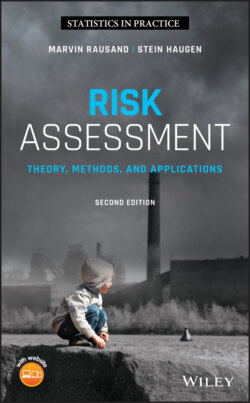Читать книгу Risk Assessment - Marvin Rausand - Страница 94
2.4.2 Controversy
ОглавлениеIn risk analysis, it is not realistic to assume that the events are repeatable under essentially the same conditions. We cannot, for example, have the same explosion over and over again under the same conditions. This means that we need to use the Bayesian approach. Although most risk analysts agree on this view, there is an ongoing controversy about the interpretation of the subjective probability. There are two main schools:
1 (1) The first school claims that the subjective probability is subjective in a strict sense. Two individuals generally come up with two different numerical values of the subjective probability of an event, even if they have exactly the same knowledge. This view is, for example, advocated by Lindley (2007), who claims that individuals have different preferences and hence judge information in different ways.
2 (2) The second school claims that the subjective probability is dependent only on knowledge. Two individuals with exactly the same knowledge always give the same numerical value of the subjective probability of an event. This view is, for example, advocated by Jaynes (2003), who states:A probability assignment is “subjective” in the sense that it describes a state of knowledge rather than any property of the “real” world but is “objective” in the sense that it is independent of the personality of the user. Two rational human beings faced with the same total background of knowledge must assign the same probabilities [also quoted and supported by Garrick (2008)].
The quotation from Jaynes (2003) touches on another controversy: that is, whether the probability of an event is a property of the event , the experiment producing , or a subjective probability that exists only in the individual's mind.
The mathematical rules for manipulating probabilities are well understood and are not controversial. A nice feature of probability theory is that we can use the same symbols and formulas whether we choose the frequentist or the Bayesian approach, and whether or not we consider probability as a property of the situation. The difference is that the interpretation of the results is different.
